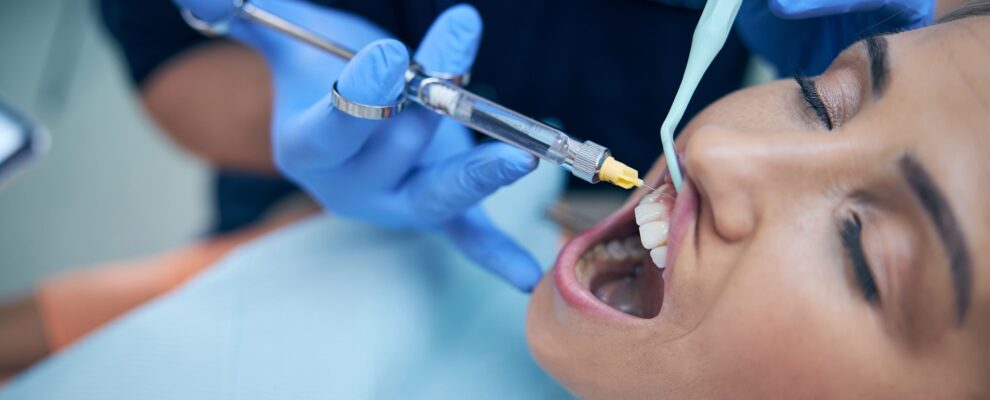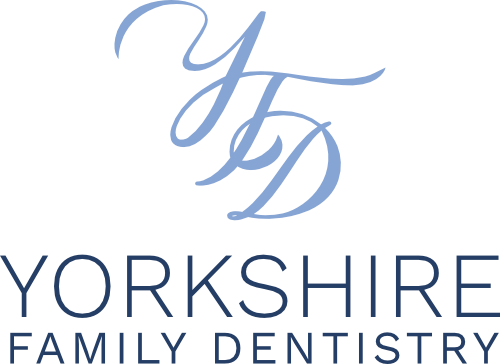Relieving Dental Anxiety and Pain—A Guide to Anesthesia Options

Dental visits can be daunting for many due to anxiety and fear of pain. However, awareness about dental anesthesia and sedation choices can help ease such worries, paving the way for a pain-free and relaxed dental visit. Modern dentistry presents numerous viable options for managing pain and unease, including localized anesthesia, nitrous oxide (commonly known as laughing gas), oral conscious sedation, and intravenous (IV) sedation. Each of these options boasts its own merits and suitability for different dental procedures. A thorough discussion about their apprehensions, health conditions, and issues with their dentist enables patients to select the most appropriate and effective dental anesthesia or sedation suited to their specific needs.
Local Anesthesia: Alleviating Pain
In dental practice, local anesthesia serves as a key instrument in pain reduction during diverse dental treatments. It works by momentarily blocking nerve signal transmissions within a designated mouth zone, efficiently numbing it to avoid discomfort. Lidocaine and Novocain are typically used to create this effect. Its application entails a specific injection into the area encircling the treatment site, delivering immediate and precise pain alleviation. Its adaptability allows its usage for various dental procedures, ranging from basic cavity fillings to intricate root canal operations.
A primary benefit of local anesthesia is its short recovery duration. Patients can anticipate the numbness wearing off within hours post-treatment, facilitating a swift resumption of everyday tasks. Still, during the immediate recovery, care should be taken to evade inadvertent harm to the anesthetized area, like biting one’s own cheek or tongue. This direct and effective pain management strategy emphasizes local anesthesia’s significant contribution in ensuring a painless dental session, highlighting its vital place in current dental practices.
Nitrous Oxide: Calming Dental Fears
Nitrous oxide, also known as laughing gas, is a mild yet efficient way to alleviate dental anxieties, providing a soothing environment for patients. Administered via a non-intrusive nose mask, it’s a desirable choice for those apprehensive about needles or invasive methods. The tranquilizing effects kick in almost instantaneously, with patients usually experiencing a sense of ease and occasional gaiety minutes post-inhalation. This sedation method is versatile, suited to various dental services—from regular teeth cleanings to intricate tooth extractions.
A key feature of nitrous oxide is its quick reversibility. The sedative effects subside nearly as rapidly as they begin, allowing patients to promptly regain their regular capacities once the mask is taken off. This quick rebound enables patients, in most instances, to manage their own commute home, free from the usual drowsiness linked with other sedation types. Thus, nitrous oxide emerges as a favored choice for those wanting to mitigate dental stress while retaining post-treatment self-sufficiency.
Oral Conscious Sedation: Pre-procedure Medication
Oral conscious sedation utilizes oral drugs to markedly decrease a patient’s dental stress and unease while keeping them conscious and responsive. This method is ideal for those with substantial anxiety about dental visits or those facing multiple or lengthy dental treatments. Typically, patients are directed to take a prescribed medication around an hour before their dental session, ensuring they arrive at the clinic in a peaceful state. The medication induces a deeply relaxed condition but maintains full alertness, facilitating communication with the dental staff throughout the treatment.
Owing to the lasting impact of the sedative, it is imperative for patients under oral conscious sedation to have a companion who can drive them to and from their session, as they should not operate vehicles until the effects have completely worn off. This type of sedation is distinguished by its simplicity in administration and its adaptability to diverse levels of patient apprehension and procedure intricacy, positioning it as an excellent choice for augmenting patient comfort during dental procedures.
IV Sedation: Deep Relaxation
Intravenous (IV) sedation is a key instrument in dental sedation, providing extensive relaxation for individuals with severe dental procedures or dealing with high dental anxiety levels. This method, delivered via the vein, transmits sedative medications straight into the blood, facilitating prompt and modifiable sedation degrees during the dental intervention. The accuracy of IV sedation allows the dentist to customize the sedation intensity as needed, guaranteeing that the patient stays relaxed but able to respond to verbal signals during the operation.
This form of sedation is especially beneficial for patients requiring intricate dental tasks, those preferring to combine multiple treatments into one appointment, or people whose nervousness may otherwise impede them from accessing vital dental treatment. With IV sedation, patients commonly experience little to no memory of the treatment, an advantage for those apprehensive of dental procedures.
After an intervention using IV sedation, a considerable recuperation time is required. Patients need an accountable adult to guide them home since the sedative’s effects can disrupt motor abilities and decision-making for several hours. The dentist will issue specific guidelines for post-treatment care, underlining the need for relaxation and refraining from handling heavy machinery until the sedation completely diminishes. This cautious approach to post-sedation care guarantees a secure and serene recovery period, facilitating patients to return to their daily activities without unnecessary delay.
Ensuring a Safe and Effective Dental Experience
Dental sedation is guided by two main tenets—ensuring patient safety and the efficacy of the selected sedation method. Dentists are trained rigorously to choose and execute the best sedation type, fine-tuned for each patient’s distinctive needs, taking into account their health records and specific requirements of the dental procedure. Advanced surveillance tools are indispensable during these procedures, as they monitor vital signs constantly and enable quick response to any deviations, hence prioritizing patient health.
Pre-procedural discussions form a vital part of the safety procedure, facilitating an exhaustive scrutiny of the patient’s medical history, present medication, and previous encounters with sedation. Such conversations equip the dental team to foresee possible issues and formulate a personalized sedation plan, keeping risks at bay.
Furthermore, dentists give comprehensive instructions prior to and following sedation, stressing the significance of adhering to instructions such as organizing transport post-procedure and advice on recuperation post-care. These collective steps significantly contribute towards enhancing patient safety and the effectiveness of sedation, reiterating the promise to offer a secure, comfortable dental procedure. By careful planning and watchful monitoring, dental professionals ensure that sedation is not only successful but also stays true to the prime objective of patient wellbeing and safety.
Communication is Key
The key to a successful and beneficial dental visit is communication between the patient and the dentist. Patients are urged to voice their fears, ask about the different sedation methods, and discuss any health issues that may affect the sedation choice. This conversation allows the dental team to design a treatment plan that meets the patient’s dental needs while also considering their emotional well-being and safety. Knowledge about the procedure, sedation, and aftercare instructions can greatly calm a patient’s nerves, making their dental visit less intimidating and more positive. It’s this combination of informed patient involvement and expert advice that shifts the perception of dental visits from being fear-driven to being a part of the journey towards oral health preservation and enhancement.
